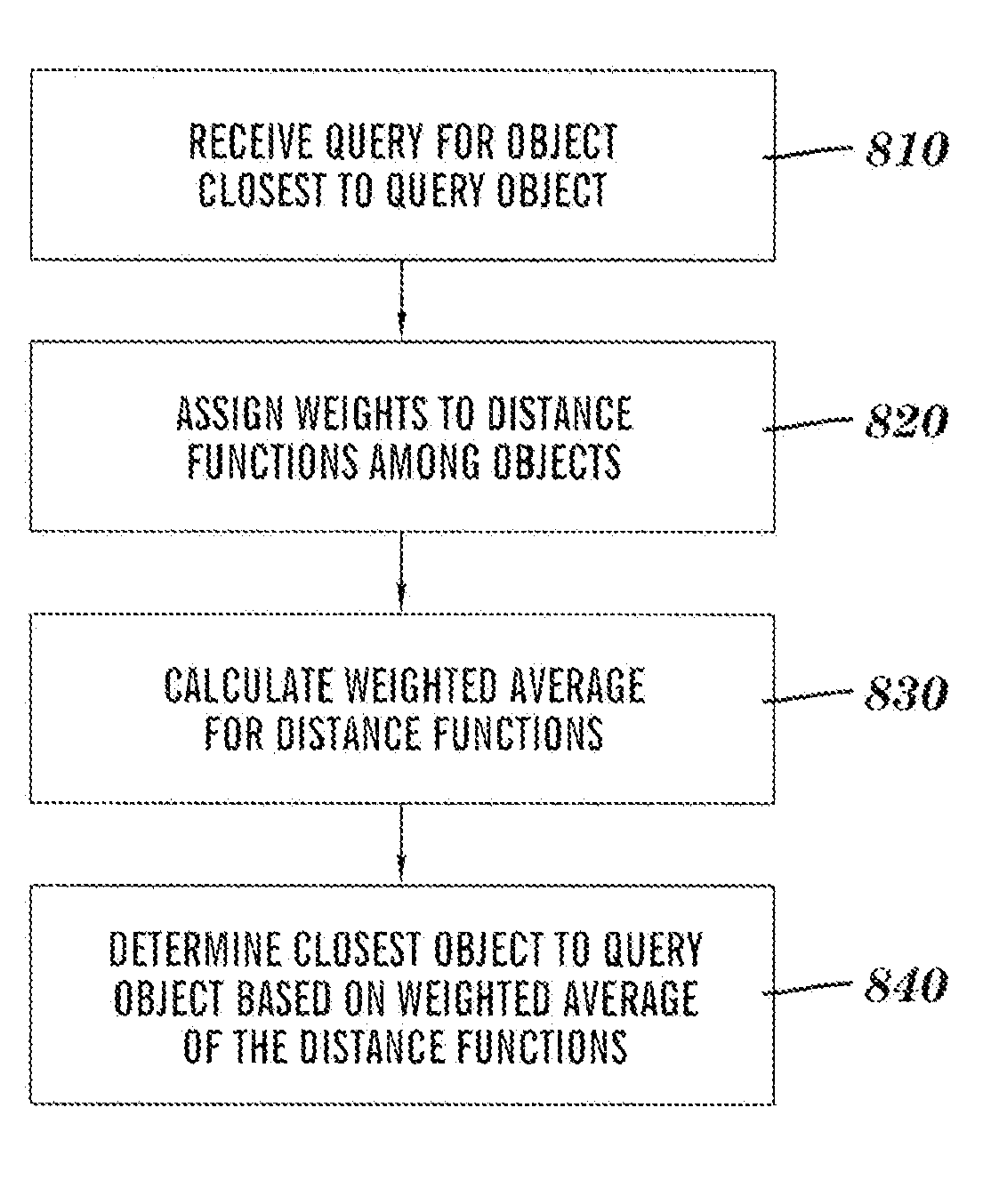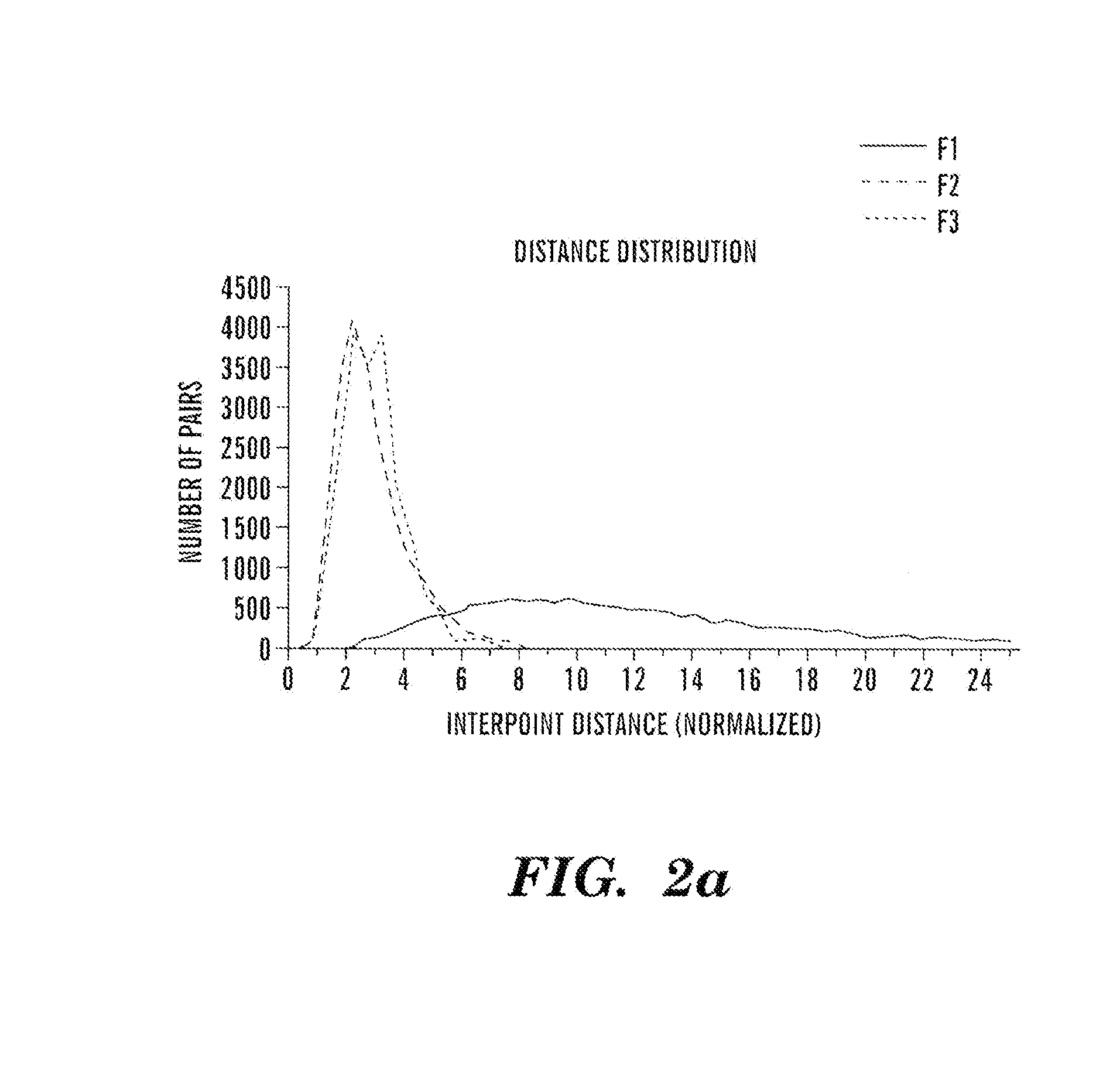Method, computer program product, and device for conducting a multi-criteria similarity search
a similarity search and multi-criteria technology, applied in the field of similarity searching, can solve the problems of no principled approach to selecting items, and exponential growth of the running time of the algorithm
- Summary
- Abstract
- Description
- Claims
- Application Information
AI Technical Summary
Benefits of technology
Problems solved by technology
Method used
Image
Examples
Embodiment Construction
[0024]According to exemplary embodiments, a technique for conducting a similarity search is provided that is applicable to many real-life scenarios. The technique involves considering a multi-criteria near-neighbor search problem in which the dissimilarity between data items is measured by a weighted average of several distance functions, each representing a different criterion. The weights of the different criteria can vary arbitrarily and are given by the user as part of the search during a query stage. The weights are thus unknown when the database is indexed at the preprocessing stage. For example, if objects, e.g., chemicals, X and Y are similar with respect to one characteristic (e.g., chemical formula), and objects Y and Z are similar with respect to another characteristic (e.g., structure), then clearly X and Z need not be similar at all.
[0025]According to an exemplary embodiment, an indexing scheme is provided that efficiently solves this type of multi-criteria search when ...
PUM
 Login to View More
Login to View More Abstract
Description
Claims
Application Information
 Login to View More
Login to View More - R&D
- Intellectual Property
- Life Sciences
- Materials
- Tech Scout
- Unparalleled Data Quality
- Higher Quality Content
- 60% Fewer Hallucinations
Browse by: Latest US Patents, China's latest patents, Technical Efficacy Thesaurus, Application Domain, Technology Topic, Popular Technical Reports.
© 2025 PatSnap. All rights reserved.Legal|Privacy policy|Modern Slavery Act Transparency Statement|Sitemap|About US| Contact US: help@patsnap.com



